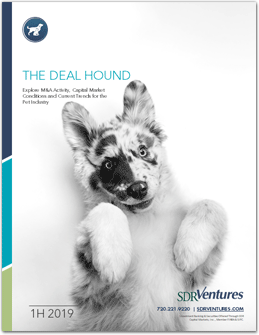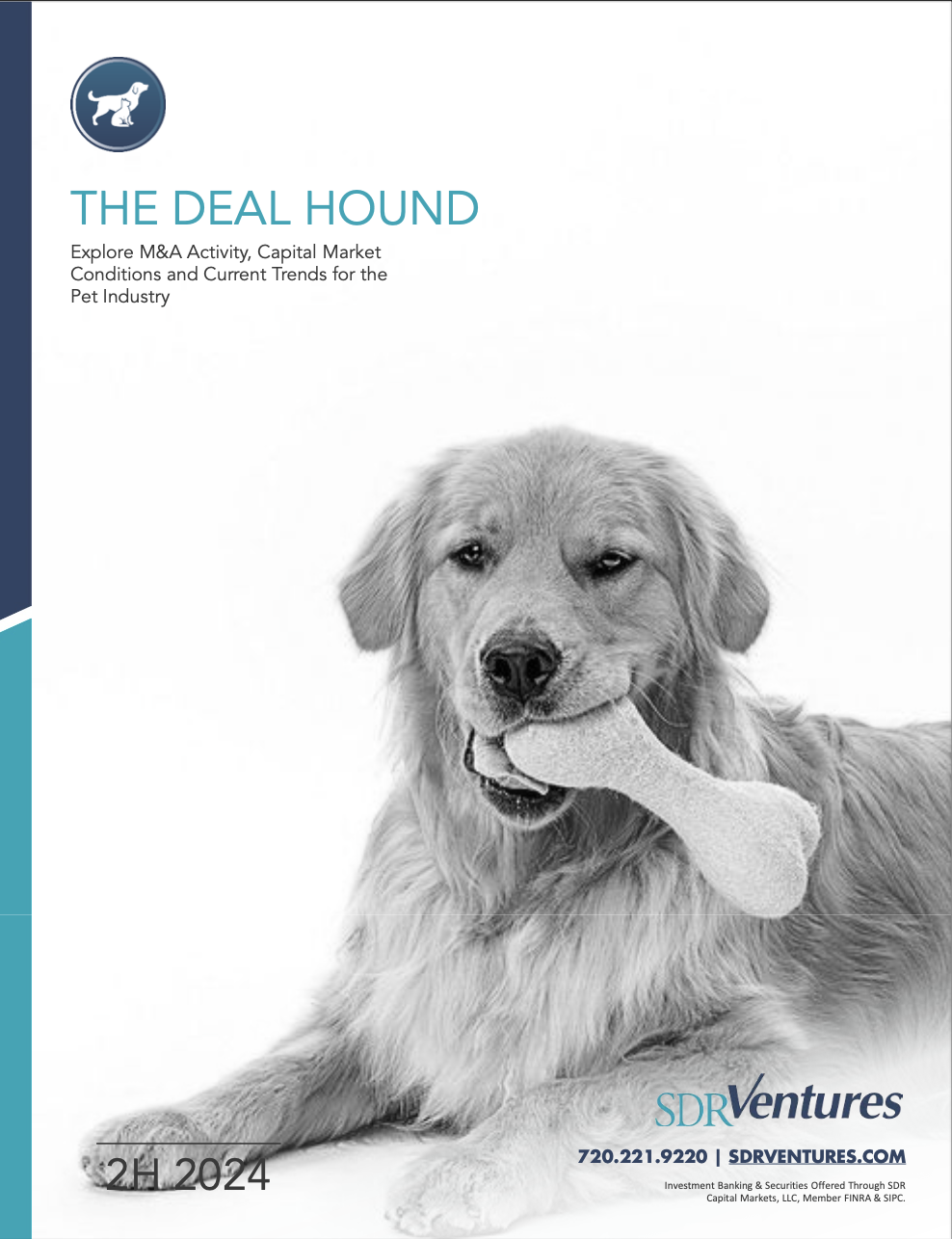2H 2024 Deal Hound M&A Report

While deals across the pet services sector may have lagged slightly in past years, we’re watching two seemingly opposing forces that may combine to boost activity in the sector. On one side, there’s a mountain of cash sitting in private equity coffers referred to in one report as an “unprecedented war chest” estimated at about $2 trillion. And that cash has an expiration date as antsy investors are eager to see their money put to work. Adding to the stockpile of available capital, Fed interest rates appear to be...
Previous Pet Industry Reports
If inflation, worries about the economy, or a slowdown (at last) in the red hot labor market gave reason for consumers cut back on spending, you wouldn’t know it in the pet products and services market. Premiumization continued its march in the space and consumers continued to spend, even if they weren’t thrilled about it, as prices for non-discretionary pet products and services are still rising faster than other consumer prices. “Petflation” refuses to sit. Bad dog…
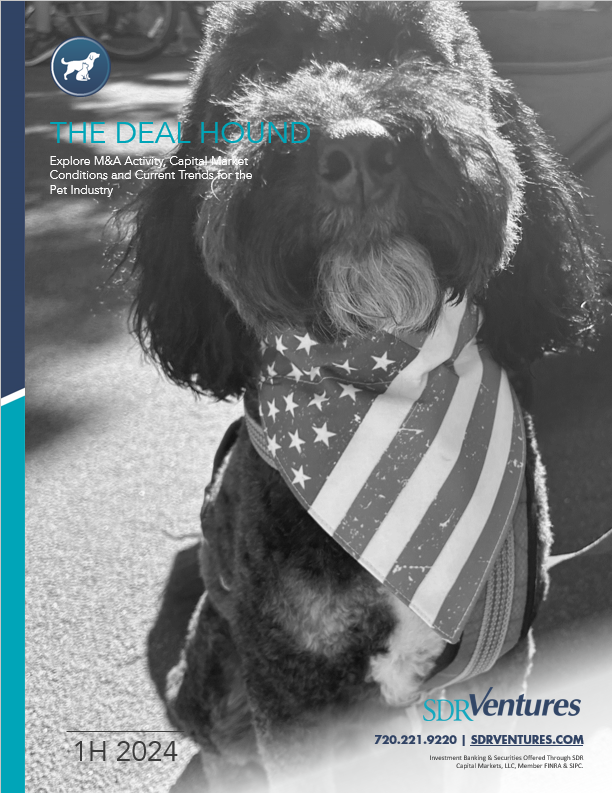
It’s a long-held tenet that the pet services and products sector is “recession proof,” immune to the laws of economic gravity. People love their furry buddies, and they want what’s best for them. But 2023, and perhaps 2024, may be testing pet parent wallets. Consumers have been fighting inflation as pet product manufacturers deal with rising input costs. You can’t address costs by suggesting someone “not feed your pet,” one analyst noted, but consumers can, and apparently did, seek less costly private or off label nutrition and toys. And the “pet pandemic effect,” people adopting new friends as they were working from home, may have peaked. Still, more than two-thirds of American homes have a pet, and pet ownership rates have been rising for three decades.

If pet parents are learning anything in this period of heightened inflation, it’s that there’s no such thing as a free puppy. The pet they got for nothing at a shelter or even from someone with a cardboard box on the roadside is going to cost plenty later in services, food, and supplements. This year, we’re seeing that come to roost as higher prices – and higher priced food and supplements – drive revenue. True, the pet supply and services sector has traditionally proven resistant to inflationary pressures, and pet parents will pay to maintain their pet’s health, but we’re watching to see how much is too much. Are pet owners cutting back? We’re not seeing it.
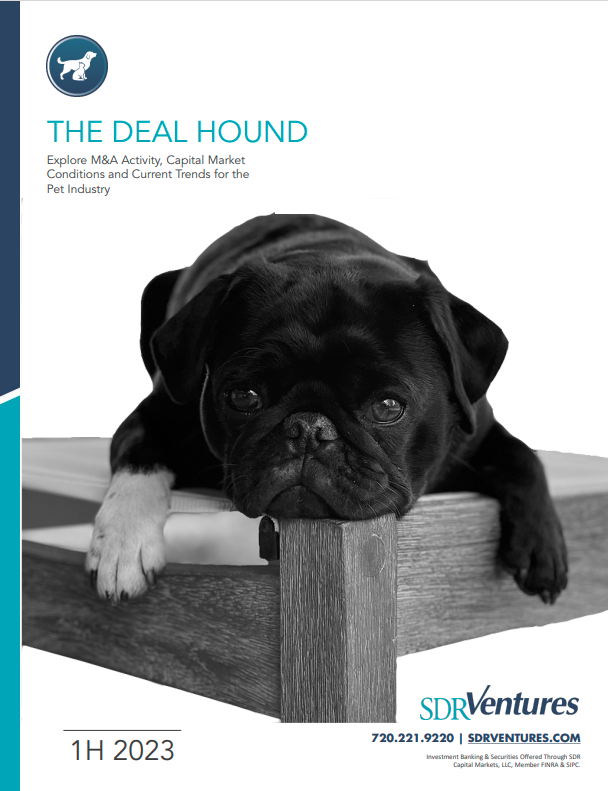
Food is no joke. Everybody, everything, has to eat. In 2022, food production was in the spotlight. Food insecurity is real. The Colorado River hit a low mark, while 80% of that water was dedicated to agricultural production – food – across the American West. The war in Ukraine threatened a global food crisis. Eggs, a common source of pet and human protein, rose in price as grocery shelves ran bare. And even as the world stared down a potential protein shortage, some 30% of meat cultivated in the United States is consumed by pets. If cats and dogs were their own country, they would rank fifth in the world in meat consumption. Some 70% of Americans live with a protein-gobbling pet.

It’s a familiar mantra that the pet care and services industry is “recession proof.” Some 70% of U.S. households include a pet, and Americans treat their pets like family and have been willing to spend on them like family, even to the point of spoiling them. In the U.S. alone, pet expenditures in 2021 exceeded $123 billion, including $50 billion in food and treats and nearly $10 billion in grooming, boarding, and even pet health insurance.
Activity in the industry remained high in the first half of 2022, after seeing a hefty jump in 2021 over the previous year in the pet food subsector. And we continue to see activity in 1H22 both from private equity and from industry leaders seeking synergistic opportunities to grow and profit.
But that doesn’t mean there aren’t factors to watch, consumer trends to monitor, and opportunities to be explored. Emerging inflation concerns may be challenging consumer discretionary spending and rising interest rates may challenge investors looking to borrow. We’ve seen that people will spend on their pets, but is there a limit? Housing prices are higher. Gasoline prices are dancing around $5 a gallon. And we’re seeing the kind of inflation we haven’t seen since Ronald Reagan’s first year in the White House…
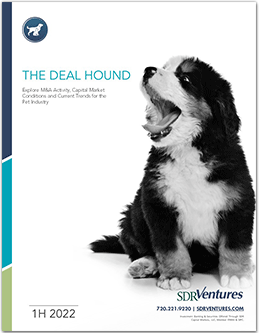
The pet care and service market has been on a tear in the past decade with growth poised to extend thanks in part to population shifts to urban areas, a Millennial generation that can’t get enough of their furry friends, increased disposable income, a growing number of single-person households, and a pandemic pet-ownership boom. Some 23 million American households, nearly 1 in 5, adopted a pet since the start of the COVID-19 pandemic. Nearly 85 million U.S. households include a pet (while less than 34 million households include children).
All those pets need care and feeding and, apparently, a lot more.
Building on the “humanization of pets” trend, all kinds of human-focused products and services are morphing into pet services. Think wearable fitness and health trackers for pets, specialty pet foods, pet health insurance, and pet video calls (yes, this is real).
As workers return to the office after months at home with their pets, we expect increased demand for pet daycare or other services. A Wisconsin-based dog daycare franchise, Central Bark, in December announced an investment from NewSpring Capital expected to propel growth from 35 locations nationwide to 350 in five years.7 The gig-based platform Rover, offering overnight pet boarding and dog-sitting, reported a best-ever $157 million in revenue for the quarter ending Sept. 30…
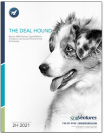
Pet ownership and related expenditures across the United States continued to boom during the COVID-19 pandemic. That should foretell opportunities across the pet services sector. Pet ownership last year was up 3%, meaning 70% of American households have some kind of pet, an all-time high. Spending on pet food was up 11% in 2020.
We continue to see an effect we call the “humanization” of pets, owners who increasingly see pets as family members worthy of human-grade food ingredients, along with the desire to provide nutritious, healthy food that is produced sustainably. For the sector, those trends are encouraging. Even more intriguing is we’re seeing these trends spread globally. In China – which represents 18% of the world’s population at 1.4 billion – we’ve seen pet ownership grow at a compound rate of nearly 33% from 2015 to 2020 with an anticipated growth of 14% over the next three years. Pet service spending in China is estimated to eclipse $67 billion a year by 2023. While pet ownership and spending in the U.S. builds, it’s no longer only a U.S. market. Think bigger.
We continue to watch the drivers behind pet ownership trends, the humanization of pets, and the growing global market. Additionally, we’re watching the pandemic-related spike in pet product e-commerce and pet telehealth visits…
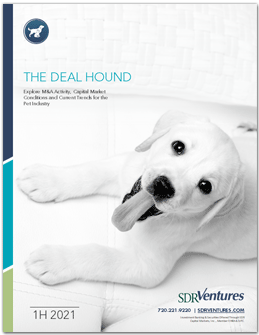
Amid a year that disrupted everything, pet owners and the pet industry appear to be shaking off the habits of “old dogs” and learning “new tricks.” The effects of the COVID-19 pandemic appear to be finally pouring gasoline on the smoldering spark of e-commerce in the pet services space, everywhere from delivery to marketing, challenging pet owners known to be brand- and store-loyal. Unexpected opportunities are emerging in an unfamiliar environment of lockdowns, working from home, automated subscription delivery programs, and what’s possible in same-day large-item delivery. If recent years have leaned into the trend of “humanization of pets” – consumer demands for human-like products for pets – then 2020 may just be the dawn of the “digitization of pets.” It was perhaps only a matter of time for e-commerce to catch up to pets, but COVID made that time now.
Coupled with a new reluctance to venture out to shop amid concerns of contagion comes new COVID-inspired demand for more products. At the start of 2020, the biggest drag on the pet services and supply sector was seen as a decline in pet ownership. Younger generations weren’t adopting pets at the rate of older generations, and the number of pets in the U.S. had been expected to decline for years. That changed with months of isolation, working from home, and reduced opportunities to socialize both at work and on the town. “Pandemic pets” became the next big thing. Shelter Animals Count, which manages a database of some 500 pet rescue shelters, reports adoptions jumped 15% in 2020. Shelters in the Washington, D.C., area have reported demand so high they began running out of available pets…
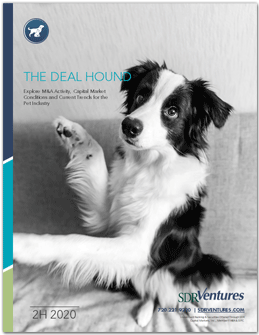
The unexpected arrival of COVID-19 in the first half of 2020 confirmed long-held beliefs that the Pet Industry is often among the most immune to turbulent economic conditions. Business Insider puts it bluntly, “Basic pet care is a consumer staple like food and electricity.”
People will always care for beloved pets. But the unusual start to 2020 has also shown that even the Pet Industry can’t avoid change this time.
While temporary retail store closings, distancing rules, and limited human interaction led to a spike in pet food sales during a period of stocking up (OK, hoarding) early on, the industry appears now to be heading down a potentially bumpy road toward e-commerce – internet sales – driving the sector into an electronic age it has struggled to adapt to. Difficulties migrating pet supply sales to e-commerce date back to the spectacular dot.com crash and burn of Pets.com, which in 2000 went from an $82 million IPO to bankruptcy in just nine months.
But pets are an important part of our lives. So successful suppliers will find ways to adapt. Even as the pandemic led to job losses and decreasing incomes, pets helped people cope. According to the American Pet Products Association’s (APPA) “COVID-19 Pulse Study,” 72% of owners said spending time with their pet helped reduce stress during the pandemic. For many, having a furry pal is more than a diversion, and pet owners recognize the benefits and are willing to spend to preserve their relationships…
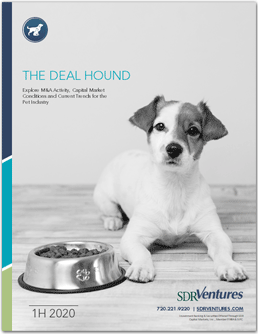
In the pet product and services industry, an identifiable shift in how people see and treat their pets drove an emerging wave of veterinary hospital acquisitions and regional rollups in 2H 2019 as the industry consolidates. A wave of young adults in their 20s are having children later in life – if at all – opting instead for pets, which become true members of a family. This “humanization of pets” is fueling demand for veterinary hospitals that provide a holistic approach, offering everything from routine checkups to advice on, and access to, affiliated high-end products including organic or specialty pet foods, vitamins and wellness supplements, prescription medication, etc.
IN DOGGONE BOOMING: SHORE CAPITAL PARTNERS
Chicago-based Shore Capital Partners is a case in point: after working with two emerging veterinary hospital groups to establish Detroit-based Mission Veterinary Partners in 2017, Shore has been on a tear, building Mission from 22 hospitals to more than 50 in less than two years. In the second half of 2019 alone, Mission added five veterinary hospitals across the Midwest, a unit growth rate of more than 10 percent in less than six months.
But that’s not all Shore has been up to in the space. Since it began working with another regional group, Southern Veterinary Partners, in 2014, Shore has continued to grow the Birmingham, Alabama based veterinary hospital chain, adding eight practices in the second half of 2019. Southern currently boasts 112 veterinary practices, serving more than 1 million pet patients a year. In 2019, Inc. magazine named Southern one of the country’s fastest growing privately held companies, earning the highest growth ranking of any veterinary company…
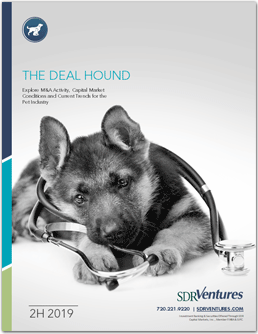
The U.S. Pet Industry continues to evolve and restructure at an accelerated pace through the first half of 2019, as the influence of e-commerce and IT pushes big-box retailers to fully embrace an “omnichannel” sales strategy in order to maintain their competitive edge. A recent report from Packaged Facts estimates that the online sales of pet-related products will surpass $11 billion in 2019, a significant leap from $3.2 billion in 2015, representing a 50%+ annual growth rate for online retail alone. As e-commerce continues to disrupt traditional retail in nearly every consumer product category, M&A participants in the Pet Industry increasingly view an online sales presence as a “must-have” offering.
Although the shift towards online retail has been rapidly growing for well over a decade, only recently have the largest industry participants, such as PetSmart, Petco and Walmart, began to diversify their channel mix to actively pursue customers both in physical stores as well as online. While traditional brick-and-mortar retailers are seeing major headwinds in terms of consumer spending, it is primarily the growth of pet e-commerce that has contributed to the growth of the industry over the past couple of years. “Online shopping has not just been cannibalizing existing business from brick-and-mortar channels. Instead, for the past few years, the Internet has been disproportionately responsible for helping to keep the U.S. pet industry on a healthy growth track,” says David Sprinkle, research director for Packaged Facts.
With e-commerce projected to account for nearly 20% of nationwide pet product sales this year, specialty and big-box chains have also been differentiating themselves from traditional online retailers by focusing on veterinary and pet care services. This is evidenced by Petco’s additions of Thrive and PetCoach, PetSmart’s partnership with Banfield Pet Hospitals and Walmart’s opening of PetIQ vet clinics in its store locations. The new PetCoach locations will offer grooming, training, dog walking and selected retail products, while Banfield and PetIQ locations provide veterinary services. These types of services inside pet superstores have been successful in attracting pet owners to physical store locations.
INCREASED DEMAND FOR HEMP-RELATED PET PRODUCTS
Demand among pet parents for CBD-infused and hemp-based products has increasingly driven M&A activity within the Pet Industry through the first half of 2019. This trend is evidenced by Elixinol Global’s acquisition of a 25% equity interest in Pet Releaf and Dixie Brands adding an additional 25% minority stake to its existing ownership stake in Therabis. Although in some cases, the regulatory environment surrounding these products still lacks legal clarity, this has not stopped manufacturers from producing them or retailers from promoting them to the market in order to satisfy…
